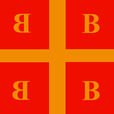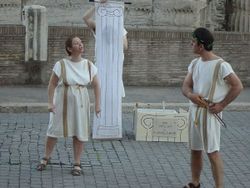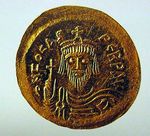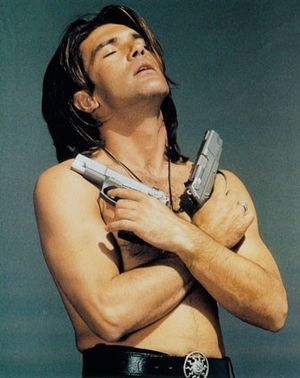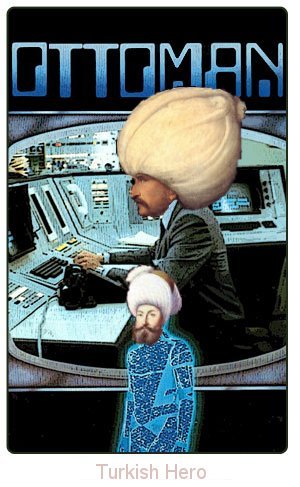Byzantine Empire
Βασιλεία Ρωμαίων The Imperial Republic of Byzantium Roman (Byzantine) Empire | |||||
|---|---|---|---|---|---|
| |||||
| Motto: Παρακαλούμε μην μας βλάψεις Κε. Βάρβαρε! Εμείs θα σου δώσουμε ό,τι θέλεις! (English: Please don't hurt us Mr. Barbarian! We'll give you anything you want!' | |||||
| Anthem: "For Glory of Senate and Republic" (anachronistic) also known as "Constantinople Not Istanbul" | |||||
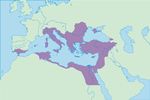 | |||||
| Capital | Constantinople (Not Istanbul) | ||||
| Largest city | Constantinople (Not Istanbul) | ||||
| Official language(s) | Greek, Geek, 1337 | ||||
| Government | Monarchy | ||||
| National Hero(es) | Constantine, Keanu Reeves, Justinian, Theodora, Waluigi | ||||
| Established | 395 AD | ||||
| Currency | Solidus, Hyperpyron | ||||
| Religion | Orthodox Christianity | ||||
| Population | 34,000,000 | ||||
| Area | 3,500,000 mm2 | ||||
| National animal | Siamese Twin Parrots | ||||
The Byzantine Empire (colloquially called "Roman Empire V: The Empire Strikes Back") was the name given to the Greek-speaking, or Geekian, half of the Roman Empire. Before the fall of Rome, it was often referred to as the Eastern Roman Empire. It was renamed the Byzantine Empire after the western half of the Roman Empire collapsed after centuries of brawling with Bavarians.[1] Some quasi-historians believe that the empire was so-called as it sounded cooler than "Eastern Roman Empire". Top Byzantine scientists are considering adding the letter "x" to the name to make it more badass.
Origins of the Empire's Name
The term "Byzantine Empire" was never used in the empire's lifetime. During its peak, it was known as the "Bantine Empire", with the area around Constantinople subsequently called "Bantium". It wasn't until the late 20th century when rapper Snoop Dogg began to study history, and created the term "Byzantine Empire", with "Bantium" subsequently called "Byzantium". From that moment, the term became massively popular and ultimately became the accepted name of the empire.
Rise of the Empire
By the thrd century AD, the capital city of the Roman Empire had become less important to the Romans.[2] Emperors rarely spent their time in Rome; they would instead be off in far reaches of the empire buying valuable gemstone-encrusted necklaces, sweet-smelling incense, and gold-plated chariots that had large, 24 inch, shining iron rims and flame decals. The emperor Diocletian, realizing how hard it was to rule an empire so large and being too lazy to rule everything by himself, split the Roman Empire in half and established a tetrarchy. It was a failure, and after Diocletian voluntarily abdicated because of what became known as "Tetrarchy-gate", the tetrarchy quickly fell apart.

Constantine I, who was a local Roman MC at the time, was fed up over the tetrarchy not working, and sought to bring the two halves of Rome back together. One by one he defeated each of the opposing kings, and after giving a proper bitch-slapping to his last rival Licinius in 324 AD, he brought the two halves of the Roman Empire back together. Soon after this accomplishment, he became the official sponsor for Christianity[3] and moved the capital of the empire to the city state of Byzantium. He was originally going to call the city "Nova Roma", Latin for New Rome, but out of vanity, he named the city "Constantinople", literally meaning Constantine's City And Nobody Else's, So Get Your Hands Off It. To insure that his precious city would not be ruined by foul hands, he started to build a series of large walls to keep out bad things such as barbarians, traveling salesmen, and grues. The walls did not do so great a job at keeping out spyware.
After Constantine's death in 337 AD, the title of emperor was given to Julian, a pagan Roman, who was vastly unpopular with the eastern half. Believing him to be a threat to the teachings of Jesus, Julian was assassinated by one of his own soldiers, who was a Christian, during a battle against the Persians in 363. No one mourned the death of Julian, except for his mother and his pet dog Colin. Indeed, some even made the remark, "eh, he was an asshole anyway." His successor was Jovian, who strangely enough was one of the least jovial men ever to have lived.[4] Ironically for such a serious man, his death was unusually comic; Jovian had died after choking on a mushroom, just one year into his reign.[5] Valentinian I was then crowned emperor in 364. He, just like Diocletian, was too lazy to rule the massive empire by himself, and appointed his son, Valens (aka, Mini-Valentinian), as the ruler of the eastern half of the empire. Valen's reign ended in 378, when he and the entire Roman legion had their asses handed to them by the Visigoths at the Battle of Adrianople. Taking Valens place was Theodosius I. Just like Diocletian and Valentinian before him, he was much too lazy to rule the empire on his own, and gave the empire to his two sons, Arcadius and Honorius. The empire was from this point known as Byzantium, which means, literally 'life is a meaningless vacuum which friends, drink, religion and casual fornication are a desperate attempt to fill.
When the Byzantines were scared out of their wits at the Battle of Adrianople, they decided that they had no choice but to bribe any invaders that would come near their lands, to make sure that they would not have their cities pillaged and their maidens raped. It was even reported that emperor Theodosius II paid the Huns of Attila 700 pounds of gold after Attila threatened to take the emperor's teenage daughter. After this incident, Theodosius II became very paranoid, and added massive fortifications to the walls, making the city impenetrable to even attacks by Anti-Grues. Even with these new fortifications, the city still had problems keeping out spyware.
Golden Age of Justinian
The golden age of the Byzantine Empire came with the ascension of Justinian I to the throne, along with his wife, the stripper turned empress Theodora. Under their reign, the empire managed to regain most of their lost territories. Justinian continued the great tradition of Byzantine Emperors being a bit lazy and rather than do it himself, in 533 he sent his greatest general, Belisarius, to retake Carthage and Northern Africa from the Vandals which Belisarius achieved without breaking a sweat (quite an achievement in that part of the world). He spent the rest of next year reverting all of the vandalism caused by the barbarians. Meanwhile, in Constantinople, Theodora was dealing with a series of riots which soon became known as the Nika Riots. During this event, a large and angry mob formed outside the city palace and started throwing blunt objects at the walls. They also threw comments such as "Go die in a fire, Justinian!" and "I love you, Theodora!" It was during this incident that Theodora showed she was more intelligent than any man; knowing how desperate the Byzantine men were to get her lingerie and sell it to the black market, Theodora soaked her bra in alcohol, set it on fire, and threw it outside to the crowd.[6] The crowd immediately caught on fire and burned to death, thus ending the revolt. Justinian was so pleased with her by this that he built the Hagia Sophia in her honor.
Justinian then sent Belisarius to take back Italy including Rome itself which Belisarius found to be in an appalling state of decay with the senators sitting around on rocks and the citizens openly defectating in the forum. At first, the Byzantine reconquest was successful and the forum was given a damn good mopping, but the Lombards soon invaded the Italian Peninsula from the north. According to historical accounts, the Byzantine army was terrified at the amount of hair that grew on the invading Lombards. Rome was laid to siege and food became scarce with the citizenry being reduced to gathering up skinflakes for making broth and the even the senate feeling the pinch having to surrender a whole ox and ten loaves of bread per day. After far too many sieges to their various fortresses and cities in Italy the Byzantines got fed-up and finally abandoned much of their empire's historic boot-shaped homeland. The only cities that the Byzantines still controlled in Italy were Ravenna and Rome. They also retained control of a small bakery in Naples whilst no one was looking too for a further ten years but that eventually fell to the barbarian hordes who gorged themselves on Byzantine cinnamon whirls.
The Crappy Age
The Golden Age of Justinian I was immediately followed by the Crappy Age of the Byzantine Empire, a period of slow, agonizing decline lasting 900 years until the Empire's defeat by the Ottoman Turks. The Crappy Age began once everybody realized that Justinian wasn't such a great Emperor after all. Many Byzantine citizens woke to the reality of the Crappy Age when their metal roofs were torn from their homes to pay for the foreign war effort.
War Against the Sassanids
The Empire was broke. Eye-gouging was at an all-time high. Depression overwhelmed Justinian's successor, Justin II, who refused to pay the annual tribute to the rival Sassanid Empire that was in effect. The reason for this is that the money Justin II had was going to be spent on alcohol and strippers. The Sassanid emperor Khosrau was angry about this as he too was going to spend the tribute money on alcohol and strippers. This soon led to the very long and costly Alcohol-Stripperia War. The winner would get all the alcohol and strippers their hearts desired. This war lasted until the reign of Maurice Povich, who signed a peace treaty with the Sassanids. In the end, no one got alcohol or strippers.
Emperor Maurice Povich continued the Empire's policy of decline. He made peace with the Persians so his army could concentrate on losing to barbarians on other fronts. A variety of Berbers, Avars and Slavs waited to massacre Byzantine troops on its western front. Maurice Povich's reign was brought to an unfortunate end by a soldier named Phocas, a veteran of several Avar-Slav massacres.
Reign of Phocas - the Crappy Age gets really crappy
Not long after the headless bodies of Maurice and his family were dragged from the Sea of Marmara, Phocas instituted his enlightened "Kill Everybody Without Thinking Twice" policy, designed to indiscriminately kill random people of every class, religious affiliation, and culture. In this way, Phocas hoped to revolutionize the Byzantine Army's "Death Policy," which unfairly persecuted Greens[7], Monophysites, and well... everybody that was different. Imperial scholars and intellectuals hailed Phocas as "The Most Enlightened and Fair ruler of the Crappy Age". Touched by their praise, he poked their eyes out with a stick.
Despite his general unpopularity with the people and the senate, Phocas ingratiated himself with the Pope and was the last Emperor to be given an erection in the Roman Forum.[8]
The reign of Phocas was brought to an end when a hip young stud called Heraclius decided he'd jolly-well had enough and set-sail from North Africa to Constantinople to overthrow the Emperor Phocas. On entering the city, the populace immediately gathered around him and stroked his luxurious beard and the Senate fell over their silken robes and catamites to hail him as their new and attractive Emperor. The overthrow Phocas was stripped of his princely garmets, marched nude through Constantinople (on a cold morning so the people would mock his "little Phocas") and made to prostrate himself in front of Heraclius. The new Emperor famously pointed to all the damage and neglect done to the city during the Crappy Age and remarked "Is this how you have governed the Empire, wretch?" to which Phocas shrugged and replied "Pfffft, well at least I had a laugh. Unlike you, you sourpuss twat!" Heraclius then swiftly removed Phocas' head and donated it to the Hippodrome. A spirited game of kick the ball in the net was played with it, and the Blues beat the Greens 4:1.
Muslim Invasions
Around 630, a Byzantine soldier by the name of Petros Momos accidentally left the back door opened near the fortress of Gaza in the Sinai. Predictably, the entire empire was invaded all at once by Arabs, who came from a happy nomadic playground called Saudi Arabia. These Rough-Riding Arabs brought with them Islam, which proceeded to ban everything the Byzantines had grown to love, up to and including bars, strip joints, and Hooters.[9] Having just been exhausted from fighting with the Persians and recovering the eastern provinces, the Byzantines said something along the lines of "Petros, you blasted buffoon! We told you to open the door after putting up the bug screen!"
Arab armies, riding on purebred racing camels (historians believe that one of them was called "Seabiscuit"), took city after city. Eventually, after having a sleepover outside the walls of Constantinople[10], they were just about to lay siege to the city when they realized that there weren't any boulders to hurl at the city walls, so they resorted to firing fruits and vegetables. Not long after firing all of the fruits and vegetables, they finally noticed that they just wasted their entire food supply, and the nearest 7/11 was in Damascus; they ended up dying of hunger.
Iconoclasm
In the 8th century, Emperor Leo III had a problem: There were many pictures of Jesus throughout the empire, and they were all ugly. He demanded that interior designers refurnish all religious buildings in the empire and remove all images of Jesus. Within a year, the designers had removed all images of Jesus and made all of the churches look fabulous, if a bit austere. This movement was called iconoclasm.
Not everyone was happy with this development. The people who liked the images of Jesus were upset by their removal and demanded them back. When the emperor refused to comply with these wishes, the people got angry and started to revolt by spreading rumors about the emperor's sex life. They also gave the emperor's son Constantine V the nickname of "Copronymus", or "poopypants"; he was given this name after a little accident he had during his baptism when he was a baby.
Eventually, the icons were restored, and the people stopped making poop jokes about the emperor's son.
Heresy
In the Byzantine Empire, if you wondered aloud what type of bread Jesus created at the Sermon on the Mount, your life would be in jeopardy. Depending on your answer, you might have murderous Ryeists, Sourdoughists, Foccaciaists, or Paniniists knocking on your door in the middle of the night. Either that, or you might inadvertently start a new Bread Sermon cult that would burn down a city in Asia Minor.
Heresy was everywhere in the Byzantine Empire, and the military devoted much energy to beating up people who disagreed with the Emperor. Here are some of the more important sects which emerged during the Crappy Age:
- Monophysites: They believed that Jesus, God and the Holy Spirit were made out of one substance and they were the same guy.
- Polyphysites: They believed that Jesus, God and the Holy Spirit were made of different substances and were different people.
- Polysaturatedfatites: They believed that the Holy Trinity were all one substance, God and Jesus were different people, but the Holy Spirit was made out of sweet, sweet candy.
- Triglyceridemononucleotideborgites: Historians have no ideas what these loonies believed.
- Nestorians: They believe that Jesus was two different people. By day he was a mild-mannered carpenter. By night he was a mysterious crimefighter called “The Saviour.”
- Paulicians: They decided that the Old Testament was garbage. Furthermore, being a depressed lot, they thought that the world is full of suffering. Therefore, bringing new life into the world is a sin. Therefore, adherents should do each other up the bum. Yep. I'm not lying. Check your history books. It's the truth.
With so many choices of what to believe, and so many painful ways of enforcing them, it is little wonder Byzantine Christians converted to Islam in droves when the opportunity came.
The resurrection of the West
In 800AD a lady, Irene, sat on the Byzantine throne. She insisted however that she was known as "Emperor" rather than "Empress" which was sexually-confusing for people who wanted to sleep with her. It also confused the Pope in Rome who had to recognise subservience to a Roman Emperor and was buggered if he was going to recognise a woman as such. After all, she'd probably spend all her time giggling and talking with her friends about which priests had nice legs rather than committing herself to affairs of church and state. The Pope had an ingenious idea, though. Why not resurrect the long-vacant office of Western Roman Emperor?! After all, the Byzantines didn't seem to be doing much with it. For this he chose a Frankish king called Charlemagne and crowned him Emperor of the West as a surprise prezzie on Christmas day 800AD. Far from being happy about this, Irene immediately sent lawyers to Rome insisting that the Pope had violated Constantinople's intellectual property and insisting that Charlemagne could not use the term Roman Emperor and would be sued for damages if he did so. Charlemagne, being a clever sort, adjusted his title to that of Holy Roman Emperor and the name of his resurrected Western Empire to Holy Roman Empire and insisted that the names were now suitably different. Irene claimed it was still a violation of IP and issued a writ against Rome and Charlemagne for piracy. However, clever Roman[11] lawyers caused the case to get bogged-down in legal proceedings and Constantinople was too busy fighting wars on its eastern frontiers to pursue the case with its full powers. The Eastern Empire withdrew its writ in 1200 by which time the new names for the West had stuck.
73|-| 8U|_64|2 5|_4Y3|2 (The Bulgar Slayer)

By 894, the Byzantine Empire was coming under repeated spanking by Bulgars. Whenever the Bulgars would capture a Byzantine city, they would always follow the routine pattern of torching it, looting it, urinating in the public square, writing obscenities on the walls, doing horrible things to the womenfolk, and tipping over every two cows in every pasture. Under the rule of the very grumpy Czar Simeon I, the Bulgars would beat the Byzantines so badly that they had to pay annual tributes to the Bulgars, and the young Byzantine emperor Constantine VII was forced to marry the fattest and ugliest daughter of Simeon I. Surviving text from that time states that their honeymoon was not fun; their dinner was terrible, they had nothing in common, the sex they had[12] late in the evening was short and unsatisfying for both, and the whole time she kept complaining that she wanted to go to Rome.
Former Battleship master and avid gamer Basil II took the Byzantine throne in 976, and made it his personal mission to crush, destroy, obliterate, and annihilate the Bulgars who had conquered most of his kingdom. He battled the Bulgars on a daily basis, sometimes twice in one day, and within 20 years he had defeated them decisively. He then took the Bulgarian prisoners and used them in a game similar to the modern day game of Whack-A-Mole. In the game that was played there were several holes. Out of those holes a Bulgar would pop out at a random time. The player had to stab out both eyes of the Bulgar before he went back into his hole. Basil II, with his superior gaming skills, stabbed out both eyes of 99 out of every 100 Bulgars that appeared. The 100th Bulgar of each 100 Bulgars lost only one eye. To this day, no one has ever beaten his high score.[13] For this, Basil II was given the title 73|-| 8U|_64|2 5|_4Y3|2. (In English: The Bulgar Slayer)[14]
Seljuk Turks
The Seljuk Turks, led under a man named Alp Arslan, caused the most considerable trouble for the Byzantines during the decline of the empire. They wore onions on their heads, and any Byzantine soldier who survived an attack from their armies claimed that the entire battlefield reeked of onion when a battle was over. The complaints over this smell led to the invention of the air freshener, which released incense, so the Byzantine soldiers would not suffocate from the horrible smell of the onions.
But no air freshener would get rid of the stinky defeat that the Byzantines suffered at a town called Manzikert in 1071. During the battle, the emperor Romanos Diogenes was captured and taken to the Seljuk stronghold somewhere in eastern Anatolia. There he was forced to endure heinous tortures such as whipping, spanking, and performances by clowns.[15] Romanos expected that he would be killed sooner or later, but Alp Arslan decided to free him instead. When he returned to Constantinople, the people attacked him. It turned out that while he was being tortured during his time in captivity, someone recorded the events and distributed it as an S&M video on the Byzantine porn market. For this, Romanos was captured by his political enemies and his eyes were poked out with a stick. He later died of an eye infection.
The Crusades
Most of the empire's decay occurred during The Crusades, which were a series of wars waged by the Christians to take back the Holy Land and maybe even jihad their ride. The First Crusade was launched in 1095, the crusader army under the command of a hermit.[16] As the Byzantines let the army pass through Constantinople, they noticed that a few of the soldiers were carrying camera equipment. In 1099, the crusaders took back Jerusalem from the muslims, and came back to Constantinople with a special surprise: a movie. The film starred Keanu Reeves, and depicted the many battles the crusaders fought and the eventual conquest of Jerusalem, along with plenty of special effects such as high-quality studio lighting, computer graphics, and a cardboard cut-out of Luke Skywalker fighting the caliph's armies. The people loved it, and The First Crusade became the most successful film of the medieval era, grossing a total of 250,000 gold coins, which is a total of 3.6 billion euros today.
With such a blockbuster hit, the Pope sent more crusaders to the Holy Land, expecting another successful film. The result was The Second Crusade, and later The Third Crusade, both of which premiered in Constantinople. These sequels were far less successful than the first film. Critics complained that the script was less involving, the actors were less interesting, and the theme was beginning to become repetitive. People no longer became interested in the series if the sequels were just going to suck harder and harder.
An example being was the Lepers' crusade of the late 1090's which passed through Constantinople, a scene often depicted in Byzantine mosaics, typically with toga wearing Greek hoi polloi holding their noses as the putrid/pious mob passes tediously slowly.
In 1204, the Nights Templar, the movie studio responsible for the Crusades series, was running out of money due to poor tickets sales, and the pope gave them one last chance to produce a box office hit. With that, they started to assemble an army to travel to the Holy Land. However, they encountered a problem: they didn't have enough people, so they decided to travel to Constantinople to recruit more crusaders for the movie. The Byzantines did not let the crusaders inside the walls, saying that "the new movie will suck and we would rather let you go bankrupt than let you produce a crappy movie". [Citation not needed at all; thank you very much] Angry over this, the crusaders crashed their own sailing vessels into the city walls that were along the sea, climbed up the masts over the walls, and proceeded to sack the city for three days. The Pope, appalled by this turn of events, completely disbanded the Nights Templar and immediately excommunicated everyone involved in the production of the movie.
The Latin Empire, 1204-1261
Immediately following the sack of Constantinople and the Pope's dissolution of "Crusade IV: The Revenge of Christ", extras from the wayward movie wandered the streets of the Byzantine capitol. The largest contingent of extras was a group of Spanish-speaking, swarthy, guitar-playing guys with pencil-line moustaches that the Nights Templar planned to use in the Hagia Sophia desecration scene. Out of work and filled with fiery passion, these Latins seized the reigns of government and established the so-called Latin Empire.
The years of the Latin Empire were filled with excess and corruption, as the temperamental Latins immediately set about teaching the dance of desire to Constantinople's prettiest bespectacled virgins. The Greeks subsequently endured endless speeches from their stereotypical rulers about "passion" and were forced to take afternoon siestas, a tradition that is still forced upon the Greeks today. Draconian laws established in 1235 stated that all ladies must wear flowing crimson skirts and clutch roses in their teeth. For fifty-seven years, the halls of the Byzantine Imperial Palace rang with jittery, anachronistic guitar music.
The Latin Empire was brought to its knees by Michael Palaiologos of Nicaea, who found the gates of Constantinople unguarded in 1261. Apparently, the Latins had moved on, feeling that their mission was accomplished and that the Greek populace was sufficiently passionate. Strangled by years of happiness and love, the people of Constantinople lighted a giant bonfire in the centre of the city, burning all the city's guitars and tight leather pants.
Michael Palaiologos crowned himself Michael VIII and immediately began to strangle the Byzantine economy and put people's eyes out. Satisfied, the city breathed a collective sigh of relief and got back to the business of declining.
Apex of the Crappy Age
After 1270, the “Byzantine Experiment”, begun by the Constantine I, at last reached fruition. The ambitions of a thousand long-dead Byzantine policy makers finally came true as the Palaiologos Family created the most worthless, depressing, rotten, vile government the earth has ever seen. The army, full of mercenaries, ravaged the land and fled from everybody that looked dangerous. Constantinople was a pile of decaying filth and marble in which men lived as rats. Ruling families ruthlessly stole from the government in between bouts of massacing each other. Nobles had their eyes gouged out at birth just to save time. Reflecting the perversion of the times, in 1291, the Patriarch of Constantinople, Anathasius I, penned a version of the Orthodox Bible written in diarrhea from his own illegitimate sons and bound with the skins of peasants he had murdered.
Byzantine society had become so violent, so corrupt, so capricious, so stagnant, that, in 1332, it imploded on itself with a spectacular “WHUMPF” that could be heard as far away as Venice. Thereafter, a great swirling void of awfulness hung over Constantinople that sucked anything new or good or happy into the sky, converted it, and rained down disease, raw sewage and head lice. Physicists call it the “Byzantium Effect”. Instead of kleptocracy (bad government), or anarchy (the absence of government), Byzantium created an absence of the absence of government, starting a philosophical chain reaction that opened the cultural black hole above Constantinople.[17]
Nature abhors a vacuum, and the Black Hole of Constantinople immediately began sucking in Turks to fill the void.
Fall of the Empire
By the 15th century, after a century of living under the Black Hole of Constantinople, the Byzantine Empire was now facing the Ottoman Empire. One by one, the Ottomans conquered the remaining Byzantine cities. In 1453, an Ottoman army of 85,000 led by sultan and master onion connosieur Mehmed II reached the city of Constantinople. The Ottomans then came up with the revolutionary idea of firing eurgs out of a single massive cannon. They knew that the walls of Constantinople were impenetrable to all forms of attack by all creatures, including grues and anti-grues, but the walls did nothing to protect against eurgs. When the eurgs hit the walls, the positive matter of the walls and the negative matter of the eurgs reacted and obliterated each other out of existence. This inflicted major damage, but the engineers never worked out the kinks of the process; the cannon took too long to load, it required too many resources, and a large number of men were killed trying to load a single eurg into the cannon.
It took two agonizing months of tedious work to blast a hole large enough for the Ottoman army to charge in, and after that, the city fell in about five minutes, which is now an unbeaten record. The Byzantine Empire fell, the city of Constantinople became Istanbul, and hashish, which used to cost a fortune under Byzantine rule, could now be purchased at half the original price.
Byzantine Contributions to Modern Life
Lasting one thousand years after the fall of the Western Roman Empire, the Byzantine Empire is barely known in modern society. Standup comedians no longer tell Phocas jokes. Yet, like the stench of stale cat urine, Byzantine influence still lingers.
That Bizarre Alphabet
The Greeks left to the the Slavs, and themselves a series of strange-looking and downright alien characters called the Glagolitic alphabet. It was invented in the 9th century by Saint Cyril of Thessaloniki for his dyslexic son who kept writing his letters backwards. It was later passed on to Bulgaria as a light-hearted joke. Then some drunken Bulgarians typed it up on a rusty typewriter from Preslav thus creating the Cyrillic Alphabet (or as written in Cyrillic: Азбукасеказваглупакосмотан). Unfortunately, the joke stuck like glue, and to this day the Bulgarians and the Russians keep using it. И са особено горди с тях, но това е друга тема. The alphabet even managed to gain massive popularity among the other slavic peoples and among some of the Turks; it was even adopted by the Mongols.[18]
Circus Factions
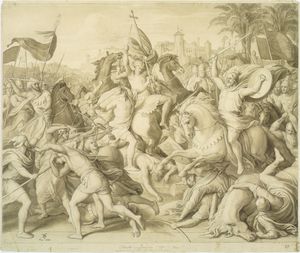
In Constantinople's Hippodrome, a big sports complex similar to Yankee Stadium but much cleaner and fancier, the Byzantine public was divided between two rival factions: the Greens and the Blues.[19] The two factions would compete in various events that involved fighting the vicious man-eating hippo (from which the arena got its name), would back various political candidates, man Constantinople's defenses, prevent the city's bases from being taken, and put out each other's eyes. When either side won the games, a riot would break out that would often last three days, leaving hundreds of citizens dead and civic buildings in flames.[20] As a result, the Byzantines changed emperors every two years or so, the city was constantly overwhelmed when one of the factions accidentally unlocked the city gates for invaders, half the population of the city was stumbling around blind as a bat, and the poor Euphrates hippo was hunted to extinction.
Thus did the Byzantines invent irrelevant "teams" for which ignorant people could "identify" and dress in stupid-looking garments, composed of violent overpaid louts, the organizations of which syphon away untold sums of money from public coffers (destined for infrastructure and social programs), the goals of which are to inspire people and "keep children off the streets" but ultimately lead to blunted intellects, wasted time, failed marriages and gang violence. It was the beginning of the NFL, NHL, NBA, FIFA and the IOC. Thanks a lot, assholes.
Death and Torture as Art

The Byzantines were very, very good at giving people really nasty owies and booboos. To them, the removal of the eyes was a minor punishment, suitable for offenses such as littering, underage drinking, and checking out the emperor's hot daughter. For serious offenses like treason, rape, sodomy, bestiality, buggery, and mooning a noble, they reserved special treatment. An experienced Byzantine torturer could, with the correct pressure to just the perfect spot on the left or right of one's gall-bladder, cause different, infinitely exquisite universes of pain and agony.
However, it was in matters of death that the Byzantines truly shone. For most enemies of the state, the bejeweled skull drinking-cup filled with Kool Aid (the executioners said it was Kool Aid, so we'll take their word for it) was standard, but execution artists were usually more creative. A traitor in the Imperial dungeons might marvel, in between screams of pain and horror, at his executioner's innovative addition or subtraction of limbs, ironic use of cannibalism, and fascinating use of family members to create a unique, protracted death-scene.
To this day, the instruction manual of the Abu Ghraib torturers used by the United States military borrows largely from the Torturium Byzantium, and the Byzantine crucifix, a stylized image of Jesus on the cross with his brain exposed and his intestines wrapped around him like a blanket, is an enduring symbol of the Eastern Orthodox Church.
"Boolsheet!"
The word "Boolsheet" is Turco-Avar in origin. The word translates poorly into English, meaning literally, "The concept upon which you have theorized is invalid, and I shall not abide it." Several scholars have used slang English to greater effect with such phrases as "No way, pops" or "Nothin' doin', ya dig me?"
Boolsheet was first used in the Byzantine Empire by General John Hatzoschmatzoboyashizukis during the Avar siege of Sirmium in 582. When ordered to surrender by the Avar Chagan, the Byzantine General spent all night drafting responses. When horsemen appeared at the city gates the next day demanding a response, Hatzoschmatzoboyashizukis, exhausted and unable to find the right wording, responded in frustration with the only word he knew the Avars would understand: "Boolsheet!"
Upon the fall of Sirmium, "Boolsheet!" became the battle cry of Byzantine forces for hundreds of years to come, similar to "Remember the Alamo" for Texans. Every culture with which the Byzantines clashed picked up the word, including the Slavs, Turks, Russians and Persians. Today, the word Boolsheet can be heard shouted in anger in greasy bars and stinky marketplaces all over eastern Europe, Greece, Asia Minor, North Africa and the Middle-East. English crusaders even brought the word back with them from the Holy Land, poorly rendered into the word "bullshit" in English.
Utencils
The Byzantines gave us the silly invention of the fork, knife and spoon sometime durng the sixth century. Before then people were eating with their bare hands like some drunken Ren-fest troopee with a turkey drumstick. Shortly after this invention however, prison inmates now had an available outlet to settle disputes in a more civilized manner - more often described as a shank. But with the twentieth century invention of the McDonalds fast food chain, such eating tools are no longer necessary, since crack-hanging pant plumbers now eat there without washing their hands after working on some sewage pipe. Silly Byzantines, they deserved the Turks.
See also
References
- ↑ Or Barbarians. One of those.
- ↑ ...and their empire. The roman one.
- ↑ Having had a dream before the battle which made him Emperor in which an angel showed him the sign of the cross and said "With this, pwn"
- ↑ "What a very grumpy man our Lord Jovian is" wrote Livy of the Emperor in 364.
- ↑ His servants warned him that the mushroom was too large to eat whole, but he tried to eat it anyway. What a greedy man.
- ↑ From an interview with Byzantine scholar Procopius, circa 533 AD.
- ↑ Historians are unable to figure out if they were Martians or people painted green.
- ↑ Meaning a monument! Honestly, this isn't Wikipedia!
- ↑ No! Not Hooters! Please don't take away Hooters!
- ↑ All of the ladies were invited.
- ↑ By which we mean from the city of Rome, rather than from the Roman Empire in the West or East. Confusing isn't it?
- ↑ Constantine VII never agreed to have sex with her; he was forced by the Bulgars to engage in sexual activity with the woman.
- ↑ No one wants to beat it because they will be punished by the United Nations if they do.
- ↑ Name translated by a group of professional hackers in 1999.
- ↑ Romanos Diogenes was afraid of clowns.
- ↑ Books say that his name was Peter the Hermit, although some historians speculate that it was Yoda.
- ↑ The Byzantium Event is historically rare, although physicist Stephen Hawking warned of potential a cultural/philosophical event about to occur above the Bush White House in July,2008.
- ↑ A historian comments: I guess eastern people really like alphabets with weird letters, don't they?
- ↑ Called such by the color of their dashing uniforms? Do you know of a designer that makes those?
- ↑ During one such riot, a statue of Jesus came to life and beat the crap out of everybody.
This empire was originally sporked from Roman Empire. |
